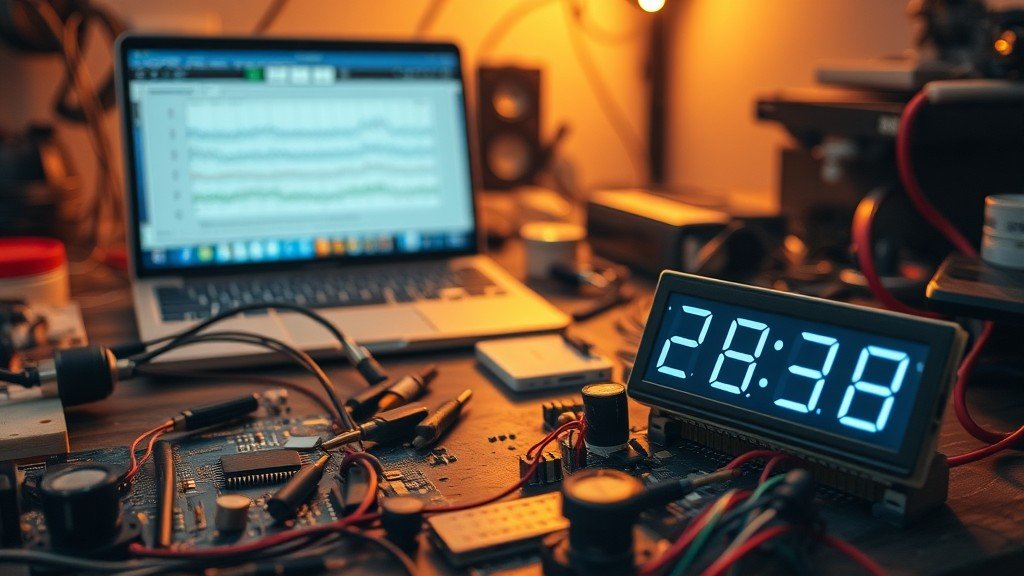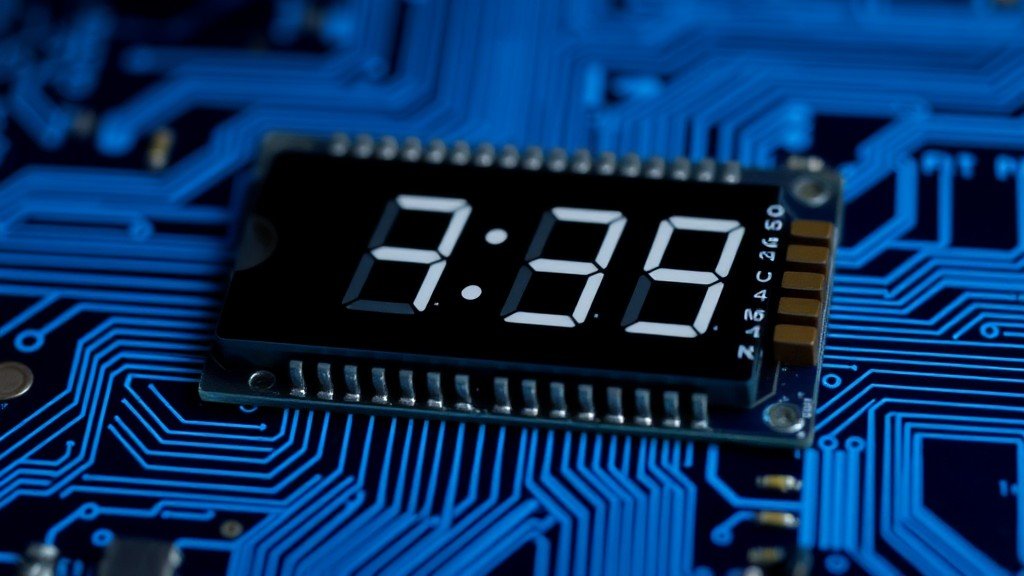Real-Time Clock (RTC) issues can be very annoying. Imagine trying to play your favorite game on Discord and getting stuck on “RTC connecting,” or your computer clock showing the wrong time. It feels like being lost in a maze without a map. The writer has faced these problems too, especially when trying to figure out why their DS1307 RTC module wasn’t keeping time correctly.
If someone is dealing with RTC problems, there’s no need to worry! There are ways to fix it, and help is here. Simple steps like checking connections, replacing batteries, or updating software can make a big difference. With the right tips, anyone can solve those tricky RTC issues and get back to enjoying their devices.(1)
Key Takeaway
- RTC problems often come from hardware or software issues.
- Regular updates and calibration can keep your RTC running smoothly.
- Community support is a great way to find solutions for tricky problems.
RTC Issues and Their Causes
Credits: Epson Corporate
RTC problems can happen for many reasons. Sometimes, it is due to bad grounding or interference from other signals. For example, if a DS1307 RTC module is not connecting properly, it might just be a connection issue. Here are some things to check:
- Make sure SCL (Serial Clock) and SDA (Serial Data) pins are connected properly.
- If the connections are loose, the RTC could show the wrong time.
Have you ever had to wiggle those pins a bit before it started working again? It can be a simple fix!
Clock Drift and Lag

Clock drift is a common RTC issue. It means the clock isn’t keeping time correctly. For example, your clock might say it’s 3 PM, but it’s really 3:10 PM. This can happen if there’s interference in the circuit.
To fix clock drift, try these steps:
- Keep a clean layout in your circuit.
- If you can’t get a good signal, think about using an external 32.768 kHz clock.
This can help keep your time accurate. Have you ever had a clock that was losing about 9 seconds per minute? That’s way too much! Fixing these issues can help the RTC work better and keep time as it should.
Out of Memory Issues
RTC problems can also happen in software like IBM Rational Team Concert. If there is an out-of-memory issue, it can slow everything down. Here’s what to do:
- Report the issue to support.
- Update to the latest version of the software.
Have you ever had to do this? It fixed a lot of problems for me. Keeping software updated can help avoid these slowdowns.
Module Connectivity Problems
If the RTC module isn’t connecting, it might be a code issue. Always check the code first to ensure the module is properly referenced in the program. If it shows up as missing, that can lead to RTC problems. A helpful tip is to write a small check in the code to see if the RTC is connected.
Have you tried this approach? It saved a lot of time for me! Catching connection issues early can make a big difference in getting the RTC to work properly.
CMOS Write Issues
For machines running macOS, RTC write issues can occur when the firmware doesn’t handle things correctly. This can lead to problems with the real-time clock, making it difficult to keep accurate time.
To fix this, one solution is to blacklist the bad RTC regions in the configuration files. This step can help prevent the firmware from trying to access areas that cause issues.
Have you ever looked for a helpful guide online? Finding one that walks through the steps can really make a difference! Taking these steps can help the RTC work smoothly and keep time as it should.
Accuracy Calibration
RTC chips like the PCF8523 may need calibration. If the clock seems to lose time, it is time to make some adjustments. Calibration steps are usually in the datasheet of the RTC chip. Here’s how to do it:
- Look at the datasheet for the calibration procedure.
- Follow the steps carefully to adjust the time.
Have you ever had to do this? I did once, and it helped my clock stay on track. Calibration can make a big difference in keeping accurate time.
Gaming Console RTC Resets
If someone has replaced the CMOS battery in a gaming console, they might notice that the time resets. This can be frustrating! Luckily, there is a way to fix this. To sync the time, adjust the settings in the debug menu.
Have they checked online for detailed instructions? A friend did this, and it worked like a charm! Taking these steps can help keep the gaming console’s time accurate. It’s always good to know how to fix these common issues.
General Fixes for RTC Issues
Here are some simple fixes to try when facing RTC problems:(2)
- Calibration Adjustments: If the clock is losing time, it might need calibration. Adjusting it can help fix time differences.
- I2C Communication Checks: If there are issues with the RTC, check the I2C communication. Sometimes, changing the address of connected devices can help.
- Power Supply and Grounding: Ensure the RTC circuit has a clean power supply and proper grounding. This can prevent interference.
- Battery Replacement: If the RTC isn’t keeping time, try replacing the backup battery. Wait a little while before putting it back in.
- Firmware and Software Updates: Keep everything updated. Updates can fix many bugs that affect RTC performance.
- Engage with Community Support: If someone is stuck, reaching out to community forums can be helpful. Others may have faced the same issues and can provide assistance.
Troubleshooting Tips for RTC Problems
To help troubleshoot RTC issues, here are some handy tips:
- Test with an Oscilloscope: If possible, use an oscilloscope to check the RTC output. It shows if the clock is working correctly.
- Avoid Unconditional Initialization: Be careful with initialization functions in embedded systems. Calling them too often can cause timing errors.
- Debugging Software Logic: Check the software logic to ensure it doesn’t pause or stop the RTC unexpectedly.
- Use an Internet Troubleshooter: If there are internet issues while using apps like Discord, check the network settings and DNS servers.
- Disable QoS Temporarily: Sometimes, quality of service settings can interfere with the connection. Try turning it off for a bit to see if it helps.
- Check the Disk Management: If the computer has problems, check the disk partition and management settings.
By following these tips, most RTC issues can be fixed. It’s all about checking connections, keeping things updated, and asking for help when needed.
Conclusion
To wrap up, RTC problems can be annoying, but they’re fixable. Whether it’s bad connections, software issues, or needing a simple calibration, there’s a solution out there. Remember to keep your devices updated and reach out to the community for help. You’ll be back to enjoying your favorite activities in no time!
FAQ
What should I do if my RTC clock shows a bad RTC time and I have a time issue?
If your RTC clock shows a bad RTC time, it might be because the RTC module is not working right or the settings are off. First, check the battery of your DS1307 RTC to see if it needs replacing. If the battery is good, try resetting the RTC clock settings. You can also open the task manager to see if any programs are causing problems, like those using high packet priority that might affect your network connection.
How can I fix an RTC connecting error while using Discord?
To fix an RTC connecting error in Discord, start by checking your internet connection to make sure it’s working well. Also, check that your DNS servers are set up correctly. If you’re still having trouble, try temporarily disabling QoS settings in Discord’s voice settings to see if that helps. If the problem continues, click the start menu and go to network settings to reset your connection, or simply restart Discord.
What can I do if my Discord is stuck on RTC and I think it’s a DNS server issue?
If Discord is stuck on RTC and you suspect a DNS server issue, try changing your DNS servers to something reliable like Google or Cloudflare. Also, check your internet connection for any problems. You can use the internet troubleshooter tool to find and fix issues with your connection. Restarting Discord can also help refresh its connection.
How do I fix ongoing RTC issues related to SCL and SDA connections on my DS1307 RTC?
If you’re having ongoing RTC issues with SCL and SDA connections on your DS1307 RTC, there may be a problem with the wiring. Make sure both connections are secure and not damaged. Check for any bad regions in your circuit that could be causing communication problems. If issues persist, consider using a partition manager to adjust how resources are allocated for better performance.
What should I check if my RTC writes are failing during setup?
If your RTC writes are failing during setup, first check if the RTC module is powered correctly and connected properly. Make sure you’re using the right libraries for the DS1307 RTC and that no other programs are interfering with it. You might also want to look at disk management settings to see if there are any issues with disk partitions that could be affecting data writes.
References
- https://www.ibm.com/real-time-clock-rtc-battery-errors-blades-ibm-bladecenter
- https://www.classic-computers.org.nz/renovating-a-dallas-battery-chip.htm


